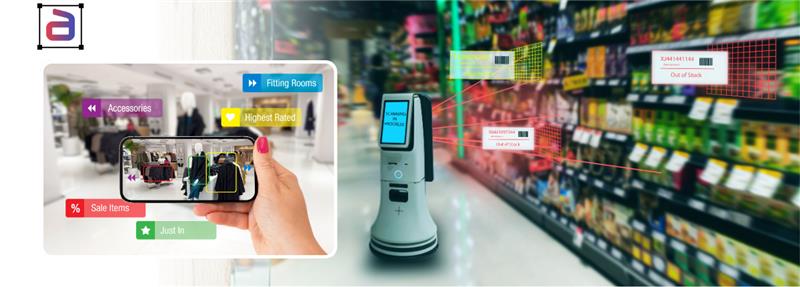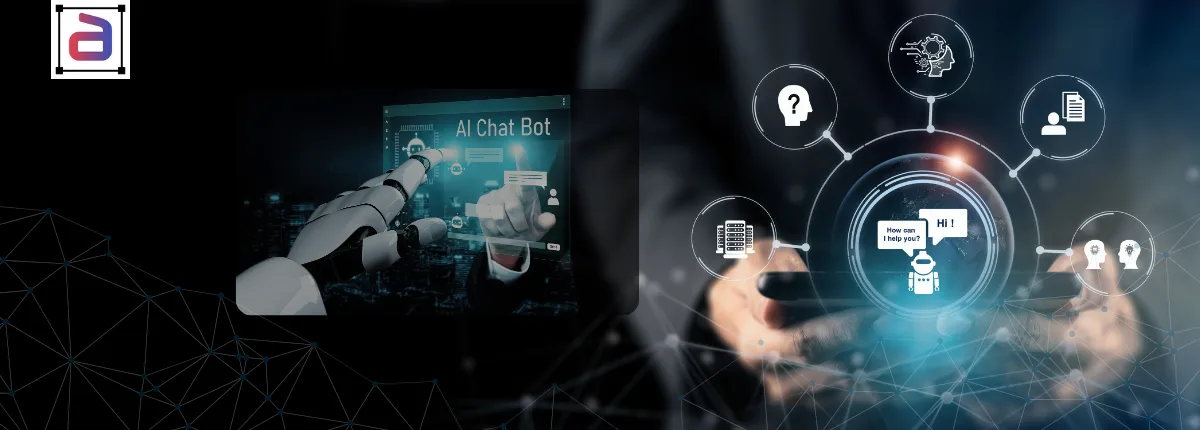The retail landscape is undergoing a silent but monumental transformation. What started as the simple convenience of a self-checkout machine is rapidly evolving into a complex ecosystem of autonomous stores, smart shelving, and frictionless shopping experiences. High-Quality Retail Annotation helps in better customer satisfaction. This transformation, powered by Computer Vision (CV) and Artificial Intelligence (AI), promises a future where retail is faster, more personalized, and vastly more efficient.
The market statistics underscore this revolution: the global smart retail market, valued at over $43 billion in 2024, is projected to soar to an astonishing $450.69 billion by 2033, reflecting a staggering CAGR of over 30%. This explosive growth isn’t just a trend; it’s a strategic imperative.
As one expert noted, “AI is an engine that is poised to drive the future of retail to all-new destinations.”
But here’s the crucial, often-overlooked truth: the journey to ‘smart’ retail is not about having more cameras or more powerful algorithms. It’s about the quality of the data that trains those algorithms. For any retail automation system—from loss prevention cameras that spot ‘pass-through’ theft to fully autonomous checkout systems—to move beyond simple detection and deliver true business value, it requires a foundation of exceptionally high-quality data annotation. At Annotera, we see this as the essential, non-negotiable step that separates a novel AI pilot from a successful, scalable automation solution.
The New Retail Imperative: Frictionless and Flawless
The modern shopper demands speed and convenience. For retailers, this translates into a fierce need to automate two primary pain points: inventory management and the checkout process.
1. Checkout Automation: Cashierless stores, smart carts, and advanced self-checkout (SCO) kiosks rely entirely on Computer Vision to identify hundreds, sometimes thousands, of different SKUs (Stock Keeping Units) instantly and accurately. They must correctly identify a specific flavor of gum, a partially obscured box of cereal, or a single banana placed among other produce.
2. Inventory and Shelf Intelligence: AI-powered shelf cameras are deployed to ensure planogram compliance, detect out-of-stock items, and even monitor customer behavior. These systems must differentiate between a customer merely browsing and a shopper with high purchase intent, all while managing inventory levels in real-time.
The core challenge is translating the messy, unpredictable visual data of a retail environment—varied lighting, occlusions, similar-looking products, fast movement, and human hands—into a clean, machine-readable format. Simple object detection, which relies on basic bounding boxes, is insufficient for this level of sophistication for high-quality retail annotation.
The Annotation-Automation Disconnect: Why Simple CV Fails In High-Quality Retail Annotation
In high-stakes retail environments, a small data error translates into significant financial loss—or what the industry terms shrinkage. The annotation-automation disconnect highlights why simple computer vision often fails in high-quality retail annotation. While automated tools handle basic tasks, they struggle with nuanced product attributes, occlusions, and complex visual contexts. Moreover, human expertise is essential to ensure accuracy, consistency, and actionable insights, ultimately bridging the gap between raw data and intelligent, reliable AI models.
Traditional, low-quality annotation efforts often focus on speed or low cost, producing datasets with high rates of inter-annotator disagreement or simple mislabeling. These imperfections are benign in many AI applications, but they are catastrophic in retail automation. A model trained on poor data learns to make errors in the most critical, high-variance scenarios, leading to:
- False Positives in Theft Detection: Flagging an honest customer’s unusual movements as attempted shoplifting, creating a terrible customer experience.
- False Negatives in Checkout: Failing to detect an item intentionally or accidentally left in the cart’s blind spot, leading to unknown loss.
- Inventory Inaccuracy: Mistaking one brand of soda for another due to minor packaging changes, causing supply chain errors.
The cost of this failure is staggering. According to the National Retail Federation (NRF), retail shrinkage in the US reached over $112.1 billion in 2022. While theft is a major factor, a significant portion of unknown loss. This is historically estimated at around 50% of the shrink number. This is attributed to operational errors, administrative mistakes, and process failures. In the age of automation, poor AI performance due to flawed training data is an accelerator of these internal errors.
Beyond the Bounding Box: Annotera’s High-Fidelity Approach
To successfully combat shrinkage and achieve flawless automation, the AI model must be able to recognize context, spatial relationships, and minute visual differences. This capability is called High-Fidelity Contextual Annotation. Beyond the bounding box, Annotera’s high-fidelity approach captures intricate details, shapes, and contextual relationships in data. By combining precise labeling with multi-sensor integration and expert validation, it ensures AI models achieve deeper understanding and accuracy. Furthermore, this approach enhances real-world performance, enabling safer, smarter, and more reliable AI-driven solutions across industries. This requires moving beyond simple detection methods to leverage advanced techniques:
1. Pixel-Level Segmentation for Product Differentiation
For products with nearly identical forms (e.g., two different scents of the same deodorant bottle), a bounding box offers no distinguishing features. High-quality Polygon and Instance Segmentation are required. This technique outlines the exact pixel shape of each item. This leads the model to learn the unique texture, color, and label art, even under poor lighting. This precision is vital for accurately ringing up thousands of different SKUs.
2. 3D Cuboids for Spatial and Occlusion Handling For High-Quality Retail Annotation
In a self-checkout environment, customers often stack items, partially obscure them with their hands, or lean them against the cart. By using 3D Cuboid Annotation, we enclose the object in a virtual 3D box, allowing the AI to understand the object’s real-world dimensions and orientation regardless of the camera’s perspective. This spatial awareness is crucial for exception handling. This speaks about the system’s ability to flag and resolve complex, ambiguous checkout moments without human intervention. The resulting model doesn’t just see an object. It understands where that object is and how much of it is visible.
3. Complex Relationship Labeling for Action Recognition
A truly ‘smart’ system needs to track more than just items; it needs to understand human intent. This requires Relationship and Attribute Labeling, where annotators tag the interaction between a person and an object.Complex relationship labeling for action recognition enables AI systems to understand interactions between multiple objects and agents within a scene. By accurately annotating these dynamic relationships, models can detect nuanced behaviors and predict outcomes more effectively. Moreover, this approach enhances real-world applications, including surveillance, robotics, and human-computer interaction, with greater precision and contextual awareness.
- Example 1 (Theft Prevention): Annotating a series of frames to show a person is placing a small item into a pocket (Action: Concealment) versus placing a large item into a personal bag for transportation (Action: Storage).
- Example 2 (Checkout): Tagging the relationship between a customer’s hand and a self-checkout scanner as ‘Intent to Scan’ versus ‘Placing Item Back’.
This contextual intelligence is what drives advanced loss prevention. This allows the system to manage the checkout transaction with ‘common sense.’ As former IBM CEO Ginni Rometty said, “Some people call this artificial intelligence, but the reality is this technology will enhance us. So instead of artificial intelligence, I think we’ll augment our intelligence.” High-fidelity data is the language of that augmentation.
The Annotera Validation Loop: A Labeling-to-Validation Pipeline
As the reference to a comprehensive labeling-to-validation process suggests, generating high-quality retail annotation is only half the battle. The other half is ensuring that this data performs optimally in real-world retail edge cases. The Annotera validation loop transforms raw data into reliable AI training datasets through a comprehensive labeling-to-validation pipeline. By combining expert annotation, multi-stage reviews, and automated quality checks, it ensures accuracy and consistency. Moreover, this end-to-end process strengthens model performance, reduces errors, and builds trust in AI applications across diverse industries.
At Annotera, our data pipeline is structured as a continuous Labeling-to-Validation Loop:
- Iterative Edge Case Sourcing: We continuously review failure logs and human-assisted exception videos from our clients’ live deployments. This allows us to rapidly identify the most challenging visual scenarios. The “edge cases”—that cause models to fail (e.g., reflective surfaces, new product packaging, a customer wearing a hat that obscures their face).
- Adaptive Annotation Strategy: We create customized, nuanced annotation instructions specifically for these edge cases. This ensures annotators receive targeted training to precisely label the complex visual data.
- Consensus and Quality Scoring: We implement a rigorous consensus mechanism and multi-tier QA process. This is beyond simple accuracy metrics to evaluate the utility and contextual fidelity of each annotation. This step is critical in the ambiguous retail environment where human judgment often sets the gold standard.
- Re-Validation and Deployment: The high-fidelity data retrains AI models, which are redeployed and continuously monitored, closing the loop.
This constant feedback mechanism is the key to achieving the over 80% of retailers who are aiming to broaden automation and AI use. They need a partner that ensures their models are consistently learning, not just processing static data.
The Path Forward: Partnering for a Predictive Future For High-Quality Retail Annotation
The future of retail is clear: automation, intelligence, and high efficiency will define it. Leading retailers will stand out not by simply having AI, but by ensuring their AI is the most reliable.
A leading voice in the field stated, “Today’s smart retailer is engaging in a new era of shopping experience.
This combines the human touch and technology to deliver a more tailored consumer experience.” The human touch in this context is facilitated by the human insight encoded in high-fidelity annotation. By labeling every pixel, object, and interaction meticulously, Annotera enables AI models to make accurate, real-time decisions.
Investing in a high-fidelity data annotation partner reduces shrinkage, boosts efficiency, and ensures customer satisfaction. It bridges computer vision models from simple detection to truly smart retail and checkout automation.
Ready to transform your high-quality retail annotation with data accuracy that meets the demands of a multi-billion dollar market? Partner with Annotera today.


